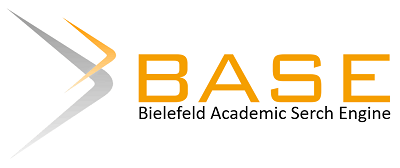Pengaruh Elektromagnetik Exchange pada Charge-Radius Isotop Ca
Electromagnetic Exchange Effect in Charge-radii Ca-Isotopes
DOI:
https://doi.org/10.36873/jjms.2021.v3.i2.601Kata Kunci:
Charge-radius, Elektromagnetik-exchange, Isotop CaAbstrak
Charge-radius inti atom atau jari-jari muatan pada nuklir yang merupakan distribusi efek coulomb yang disebabkan oleh proton dan hamburan elektron pada inti atom. Besaran ini merupakan salah satu besaran observable yang saat ini masih dihasilkan oleh laboratorium, pada penelitian ini dilakukan perhitungan menggunakan pemodelan Relativistic Mean Field (RMF) dengan tambahan suku Elektromagnetik Exchange yang merupakan fungsi dari jumlah muatan dan distribusi proton pada isotop Ca. Besaran output untuk mengontrol pemodelan adalah energi ikat yang akan dibandingkan dengan hasil percobaan laboratorium IAEA. Dengan akurasi yang cukup baik (diatas 99%) terhadap energi ikat eksperimen menunjukkan bahwa pendekatan ini menjadi salah satu pendekatan yang powerfull, namun sayangnya dalam melihat korelasi terhadap charge-radius meskipun dengan akurasi yang baik (diatas 97%), masih tidak memperlihatkan korelasi pengaruh charge-radius terhadap elektromagnetik exchange. Diperlukan analisis yang menyuluruh dari semua suku RMF untuk mendapatkan korelasi yang lebih baik lagi terhadap nilai charge-radius.
Unduhan
Referensi
A. J. Miller et al., “Proton superfluidity and charge radii in proton-rich calcium isotopes,” Nat. Phys., vol. 15, no. 5, pp. 432–436, 2019, doi: 10.1038/s41567-019-0416-9.
M. Chemtob and M. Rho, “Meson exchange currents in nuclear weak and electromagnetic interactions,” Nucl. Physics, Sect. A, vol. 163, no. 1, pp. 1–55, 1971, doi: 10.1016/0375-9474(71)90520-3.
A. Sulaksono, “Electromagnetic and isovector terms in standard relativistic mean field model,” Int. J. Mod. Phys. E, vol. 20, no. 9, pp. 1983–2010, 2011, doi: 10.1142/S0218301311019775.
Z. Patyk et al., “Masses and Radii of Sphrecal Nuclei Calculated in Various Microscopic Approaches,” Gesellschaft fur Schwerionenforsch. mbH, 1997.
R. F. Garcia Ruiz et al., “Unexpectedly large charge radii of neutron-rich calcium isotopes,” Nat. Phys., vol. 12, no. 6, pp. 594–598, 2016, doi: 10.1038/nphys3645.
D. Wu, C. L. Bai, H. Sagawa, and H. Q. Zhang, “Calculation of nuclear charge radii with a trained feed-forward neural network,” Phys. Rev. C, vol. 102, no. 5, pp. 1–7, 2020, doi: 10.1103/PhysRevC.102.054323.
T. Bayram, S. Akkoyun, S. O. Kara, and A. Sinan, “New parameters for nuclear charge radius formulas,” Acta Phys. Pol. B, vol. 44, no. 8, pp. 1791–1799, 2013, doi: 10.5506/APhysPolB.44.1791.
I. Angeli and K. P. Marinova, “Table of experimental nuclear ground state charge radii: An update,” At. Data Nucl. Data Tables, vol. 99, no. 1, pp. 69–95, 2013, doi: 10.1016/j.adt.2011.12.006.
N. Liliani, A. M. Nugraha, J. P. Diningrum, and A. Sulaksono, “Impacts of the tensor couplings of ω and ρ mesons and Coulomb-exchange terms on superheavy nuclei and their relation to the symmetry energy,” Phys. Rev. C, vol. 93, no. 5, 2016, doi: 10.1103/PhysRevC.93.054322.
I. Talmi, “On the odd-even effect in the charge radii of isotopes,” Nucl. Physics, Sect. A, vol. 423, no. 2, pp. 189–196, 1984, doi: 10.1016/0375-9474(84)90587-6.

Unduhan
Diterbitkan
Cara Mengutip
Terbitan
Bagian
Lisensi
Hak Cipta (c) 2023 Jurnal Jejaring Matematika dan Sains

Artikel ini berlisensiCreative Commons Attribution-NonCommercial-ShareAlike 4.0 International License.
















